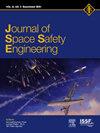空间核动力和推进系统的可靠性驱动设计和测试(ReDDT)方法
IF 1.7
Q3 ENGINEERING, AEROSPACE
引用次数: 0
摘要
美国Rover NERVA项目采用的开发方法是本文所述的可靠性驱动设计和测试(ReDDT)方法的基础。假设可能是概率设计的第一个完全程序化实施,NERVA的基本方法似乎从未在计划取消后的其他地方被采用。尽管如此,NERVA期间开发的许多框架仍然适用,本工作中描述的ReDDT方法是基于他们的方法。ReDDT方法建立在NERVA方法的基础上,通过引入定性失效模式分析来确定哪些测试是最有用的,并最大限度地提高程序效率。不确定性分析支持定性分析,用于识别系统技术不确定性的驱动因素,从而识别安全性和可靠性的驱动因素。ReDDT方法不同于现有的基于可靠性的方法,包括基于可靠性的设计优化(RBDO)和可靠性设计(DfR),因为ReDDT侧重于并发和协同的系统设计、集成和测试计划。ReDDT是为NASA目前的空间核动力推进工作开发的,但它在核动力系统和复杂航空航天系统的开发和升级方面具有更广泛的适用性。ReDDT方法的目标是将系统开发中的设计工作与集成和测试工作的关系从测试-失败修复转换为模型-测试-评估。本文章由计算机程序翻译,如有差异,请以英文原文为准。
A Reliability-Driven Design and Test (ReDDT) methodology for space nuclear power and propulsion systems
The development methodology employed in the United States’ Rover NERVA program is reviewed as the basis for the Reliability-Driven Design and Test (ReDDT) methodology described herein. Postulated as perhaps the first full programmatic implementation of probabilistic design, the NERVA foundational methodology appears to have never been adopted elsewhere following program cancelation. Nevertheless, much of the framework developed during NERVA remains applicable, and the ReDDT approach described in this work is based upon their approach. The ReDDT approach builds on the NERVA method by introducing a qualitative failure mode analysis to identify which tests are most useful and maximize program efficiency. The qualitative analysis is supported by uncertainty analysis, which is applied to identify the drivers of the system's technical uncertainty and thereby drivers of safety and reliability. The ReDDT approach is distinct from existing reliability-based methodologies including Reliability Based Design Optimization (RBDO) and Design for Reliability (DfR) in that ReDDT focuses on concurrent and synergistic system design, integration, and test planning. ReDDT has been developed for NASA's current Space Nuclear Propulsion effort, but it has broader applicability to nuclear power systems and complex aerospace system developments and upgrades in general. The ReDDT methodology has the goal of transforming the relationship of the design effort to the integration and test effort within a system development from one of test-fail-fix to model-test-evaluate.
求助全文
通过发布文献求助,成功后即可免费获取论文全文。
去求助
来源期刊

Journal of Space Safety Engineering
Engineering-Safety, Risk, Reliability and Quality
CiteScore
2.50
自引率
0.00%
发文量
80
 求助内容:
求助内容: 应助结果提醒方式:
应助结果提醒方式:


